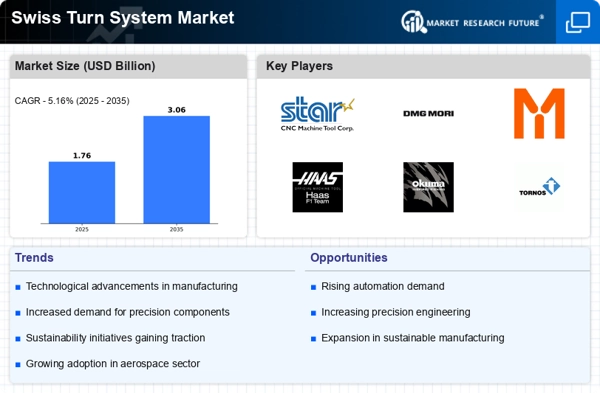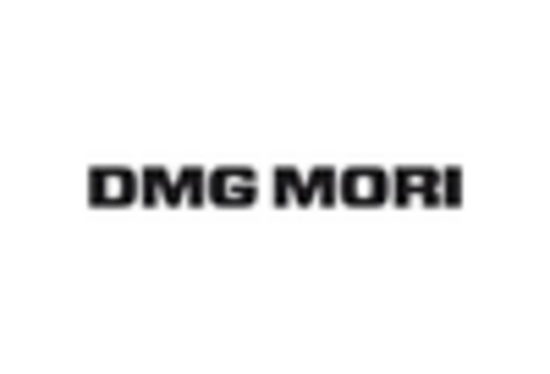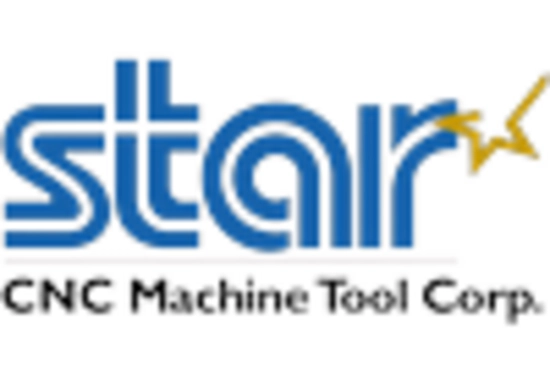The Swiss Turn System Market is characterized by a dynamic competitive landscape, driven by technological advancements and increasing demand for precision machining. Key players such as Star CNC Machine Tool (Japan), DMG Mori (Germany), and Tornos (Switzerland) are at the forefront, each adopting distinct strategies to enhance their market positioning. Star CNC Machine Tool (Japan) focuses on innovation, particularly in the development of advanced CNC technologies that cater to diverse industrial applications. Meanwhile, DMG Mori (Germany) emphasizes digital transformation, integrating smart manufacturing solutions to optimize production efficiency. Tornos (Switzerland) is strategically expanding its global footprint, enhancing its product offerings to meet the evolving needs of customers in various sectors, including automotive and aerospace. Collectively, these strategies contribute to a competitive environment that is increasingly centered around technological prowess and customer-centric solutions.
In terms of business tactics, companies are localizing manufacturing to reduce lead times and enhance supply chain resilience. This approach is particularly relevant in a moderately fragmented market where multiple players vie for market share. The collective influence of these key players shapes a competitive structure that encourages innovation and responsiveness to market demands, fostering a landscape where agility and adaptability are paramount.
In August 2025, DMG Mori (Germany) announced the launch of its new digital platform aimed at enhancing connectivity between machines and production processes. This strategic move is significant as it positions the company to leverage data analytics for improved operational efficiency, thereby aligning with the growing trend of Industry 4.0. By integrating advanced digital solutions, DMG Mori is likely to enhance its competitive edge in the Swiss Turn System Market, appealing to manufacturers seeking to optimize their operations.
In September 2025, Tornos (Switzerland) unveiled a new line of Swiss-type lathes designed specifically for the medical device industry. This introduction reflects Tornos' commitment to innovation and specialization, catering to a niche market that demands high precision and reliability. The strategic importance of this move lies in Tornos' ability to differentiate itself from competitors by focusing on specialized applications, potentially capturing a larger share of the medical sector.
In October 2025, Star CNC Machine Tool (Japan) entered into a strategic partnership with a leading software provider to enhance its CNC machine capabilities. This collaboration aims to integrate AI-driven solutions into their machinery, thereby improving automation and operational efficiency. The implications of this partnership are profound, as it not only strengthens Star's product offerings but also positions the company as a leader in the integration of cutting-edge technology within the Swiss Turn System Market.
As of October 2025, current competitive trends are increasingly defined by digitalization, sustainability, and the integration of artificial intelligence. Strategic alliances among key players are shaping the landscape, fostering innovation and collaboration. Looking ahead, competitive differentiation is likely to evolve from traditional price-based competition to a focus on technological innovation, supply chain reliability, and sustainable practices. This shift underscores the importance of adaptability and forward-thinking strategies in navigating the complexities of the Swiss Turn System Market.

















Leave a Comment